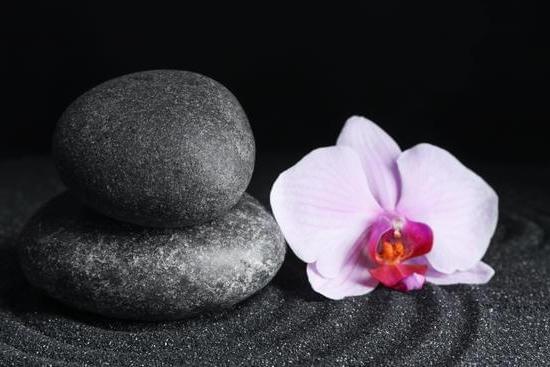Office feng shui is an ancient practice that aims to create a harmonious and balanced environment in the workplace, promoting productivity, creativity, and overall well-being. In this article, we will explore the basic principles of office feng shui, including the placement of furniture, colors, and natural elements in the workspace. We will also delve into the application of the bagua map and how it can be used to enhance different areas of the office.
Additionally, we will provide practical tips on desk placement, incorporating plants and natural elements, designing a welcoming reception area, utilizing the power of colors, and maintaining office feng shui for long-term benefits. Whether you are new to feng shui or looking to refresh your office space, this guide will offer valuable insights into creating a more positive and conducive work environment.
The Basic Principles of Office Feng Shui
In addition to furniture placement, colors play a crucial role in office feng shui. Different colors are associated with various elements and can impact mood and productivity. For example, blue is often linked to calmness and relaxation, making it an ideal color for areas where employees need to focus and concentrate. On the other hand, vibrant green is associated with growth and vitality, making it suitable for spaces where creativity and innovation are encouraged.
Natural elements such as plants, water features, and natural light can also contribute to a positive work environment. Plants not only improve air quality but also symbolize growth and vitality. Water features such as small fountains or aquariums can help stimulate the flow of positive energy within the office. Natural light is also crucial, as it not only reduces eye strain but also helps uplift mood and energy levels among employees.
| Element | Description |
|---|---|
| Furniture Placement | Position desks for a clear line of sight to the entrance |
| Colors | Choose colors that promote specific moods and productivity |
| Natural Elements | Incorporate plants, water features, and natural light for improved energy flow |
The Bagua Map
To use the Bagua Map effectively in office feng shui, it is important to align the map with the main entrance of the workspace. This alignment will determine how the different areas correspond to specific aspects of life.
For example, if the main entrance is located in the middle section of the office space, then this area corresponds to the health and family aspect. By understanding these correspondences, individuals can make intentional adjustments to enhance each area according to its associated aspect.
Once the Bagua Map is aligned with the main entrance, individuals can begin to apply feng shui enhancements to each area. For example, if a particular section corresponds to career and professional growth, incorporating elements such as artwork or symbols associated with success and advancement can help support these intentions. Similarly, if another area relates to relationships and communication, adding items that promote harmony and collaboration can enhance that aspect of work life.
Implementing feng shui adjustments based on the Bagua Map can have a positive impact on productivity, creativity, and overall well-being in the workplace. By intentionally enhancing different areas of the office according to their corresponding aspects on the map, individuals can create a more harmonious and supportive environment that aligns with their professional goals.
| Aspect | Enhancement |
|---|---|
| Health and Family | Incorporate plants or natural elements for vitality |
| Career and Professional Growth | Add symbols associated with success and advancement |
| Relationships and Communication | Add items that promote harmony and collaboration |
Best Practices for Desk Placement
When it comes to office feng shui, the placement of desks plays a crucial role in promoting productivity and positive energy flow. The way desks are positioned can impact the overall atmosphere and work dynamics within the office. Here are some best practices for desk placement that can help create a harmonious and effective work environment.
Positioning for Power and Support
In feng shui, the positioning of desks is often based on the concept of “command position,” which means placing the desk in a way that offers a clear view of the door without being directly in line with it. This position is believed to provide a sense of power and support, allowing individuals to feel more in control and aware of their surroundings while working.
Avoiding Negative Energy Flow
It’s important to avoid placing desks directly facing a wall or cluttered area, as this can create stagnant energy and hinder productivity. Instead, positioning desks in a way that allows for open space and natural light can enhance positive energy flow and improve overall well-being.
Promoting Collaboration
For team environments, it’s beneficial to arrange desks in a way that promotes collaboration and communication among coworkers. Clustering desks together or creating an open layout can encourage interaction and cooperation, fostering a sense of unity within the workspace.
By following these best practices for desk placement, businesses can cultivate a more productive, harmonious, and balanced work environment while incorporating the principles of office feng shui.
When implementing these practices for desk placement in the office, organizations can experience improved morale, enhanced creativity, better communication among employees, and ultimately achieve greater success in their endeavors.
Incorporating Plants and Natural Elements
When it comes to creating a balanced and thriving work environment, incorporating plants and natural elements can have a significant impact. From improving air quality to fostering a sense of calm and well-being, these elements play a crucial role in office feng shui. Here are some benefits of incorporating plants, water features, and other natural elements into the office:
1. Improved Air Quality: Plants are not only aesthetically pleasing but also serve as natural air purifiers, removing toxins and improving air quality. By introducing indoor plants such as peace lilies, spider plants, or snake plants, you can create a healthier workspace for everyone.
2. Increased Productivity: Studies have shown that the presence of greenery in the office can enhance concentration and productivity among employees. The calming effect of nature can help reduce stress and fatigue, ultimately leading to a more focused and efficient workforce.
3. Creating a Connection to Nature: In today’s fast-paced work environment, it’s easy to feel disconnected from the natural world. By incorporating elements such as water features or natural materials like wood and stone, you can bring a sense of nature indoors, creating a more harmonious and peaceful atmosphere for everyone in the office.
Incorporating plants and natural elements is an essential aspect of office feng shui that should not be overlooked. By embracing the benefits of these elements, you can create a workspace that promotes well-being, creativity, and positive energy flow for everyone who enters the office space. Whether it’s adding potted plants to desks or integrating nature-inspired design elements throughout the office, there are numerous ways to harness the power of nature in creating an optimal work environment.
Designing a Welcoming Reception Area
When it comes to office feng shui, the reception area plays a crucial role in setting the tone for the entire workspace. It is the first thing visitors and clients see when they enter the office, and it can leave a lasting impression on them. Therefore, it is essential to design a welcoming and positive reception area that promotes harmony and good energy flow.
Importance of the Reception Area
The reception area is where guests form their initial impressions of the company. In feng shui, this space represents opportunities and possibilities, making it important to create a positive and inviting atmosphere. A well-designed reception area can make visitors feel comfortable, welcomed, and respected, which can ultimately lead to successful business interactions.
Tips for Designing a Welcoming Reception Area
When designing a reception area with feng shui principles in mind, there are several key considerations to keep in mind. First, it is important to choose high-quality furniture and decor that reflects professionalism and attention to detail. Additionally, incorporating natural elements such as plants or water features can help to create a sense of balance and tranquility in the space. Finally, paying attention to lighting and color schemes can also contribute to creating a warm and inviting environment.
Incorporating these elements into the reception area not only enhances the visual appeal but also creates a harmonious energy flow that can positively impact everyone who enters the office space. By adhering to feng shui principles in designing the reception area, businesses can ensure that visitors experience an environment that exudes warmth, positivity, and professionalism from the moment they arrive.
The Power of Colors
When it comes to office feng shui, the use of color plays a crucial role in creating a balanced and harmonious work environment. Different colors have the power to impact mood, energy, and creativity, making it essential to carefully choose the right colors for different areas of the workspace. Here are some tips and guidance on how to effectively utilize the power of colors in your office:
- Consider the function of each area: When choosing colors for different areas of the workspace, it’s important to consider their functions. For example, calming and soothing colors such as blue and green can be ideal for spaces where employees need to focus and concentrate, like meeting rooms or work areas.
On the other hand, vibrant and energizing colors like red and orange can be used in spaces that require creativity and interaction, such as brainstorming areas or collaborative spaces. - Understand the psychology of colors: Each color has its own psychological effects on individuals. For instance, blue is often associated with stability and productivity, while yellow is known to stimulate mental activity and optimism. By understanding the psychology of colors, you can effectively use them to create the desired atmosphere in your office.
- Create a cohesive color scheme: To maintain a harmonious flow of energy throughout the office, it’s important to create a cohesive color scheme that aligns with the overall feng shui principles. This means coordinating the colors used in different areas of the workspace to ensure they complement each other without creating visual chaos or imbalance.
Incorporating appropriate colors into your office design based on these principles can greatly contribute to a positive work environment. It’s essential for companies interested in sharing office feng shui practices among their staff members to prioritize these factors when designing and arranging their respective workspaces.
Overall, understanding how different colors can influence mood, energy levels, and creativity is crucial when implementing feng shui principles in an office setting. By paying attention to these considerations when choosing color schemes for various spaces within an office environment helps maintain a balanced flow of energy throughout while contributing positively towards employee well-being and productivity in alignment with feng shui principles.
How to Maintain Office Feng Shui
Incorporating feng shui principles into the office environment can significantly impact the energy, productivity, and overall atmosphere of the workspace. By following the basic principles of office feng shui, such as mindful desk placement, incorporating natural elements, and utilizing the bagua map, you can create a harmonious and balanced work environment. However, maintaining office feng shui is just as important as implementing it initially.
Regular decluttering is essential to maintaining a balanced and harmonious office feng shui. Clutter can disrupt the flow of positive energy in the workspace and create a sense of chaos and disorganization. By regularly decluttering your office space, you can create an environment that allows for optimal energy flow and promotes productivity.
Another key aspect of maintaining office feng shui is cleansing the energy in the workspace. This can be done through various methods such as burning sage or using sound therapy to clear any stagnant or negative energy that may have accumulated in the office. By regularly cleansing the energy in your office, you can ensure that positive and rejuvenating energy flows freely throughout the space.
Lastly, making ongoing adjustments to your office feng shui is crucial for maintaining a harmonious work environment. As business needs change and evolve, it’s important to reassess the layout, color scheme, and overall energy flow of your workspace to ensure that it continues to support productivity and well-being.
By staying attuned to the changing dynamics of your workplace and making necessary adjustments to maintain optimal feng shui, you can continue to enjoy a balanced and thriving work environment for yourself and your employees.
Frequently Asked Questions
What Is the Best Feng Shui for an Office?
The best Feng Shui for an office includes keeping the space clutter-free, using calming colors like blue or green, and incorporating plants for fresh energy. Good lighting and organized furniture layout also contribute to positive energy flow.
What Direction Should My Office Desk Face?
The direction your office desk should face depends on your personal Kua number, which is based on your birth date and gender in Feng Shui. Generally, positioning your desk to face the door is recommended for better energy flow and a sense of control.
How Can I Increase My Yang Energy in Office?
To increase Yang energy in the office, you can incorporate bright lights, vibrant colors, and bold artwork. Keeping the space well-lit and adding elements of fire such as candles or electronic devices can also boost Yang energy levels.

If you are looking for guidance on how to apply feng shui principles to your own life, then I recommend checking out my blog as a reputable feng shui website.





